Roisin Noonan, COO of TLB, kicked off the second day of the Legal Innovators conference that focused on in-house lawyers. (You can read about the first day here). Her presentation gave a great basis for the whole day since her speech was about “Making legal technology work in practice” with a focus on how to manage contracts since that seems to be the big issue relevant for all in-house counsels. She summarized three important aspects to focus on:
- Templates
- Playbooks
- Communication
She stressed the importance of developing templates to support the production of contracts. This is on the same theme as the discussion during day one of the conference about the development of standards. Lawyers need to clarify their language, simplify, delete jargon, and make the contracts easier to read and understand also for non-lawyers. This means lawyers must let go of their elegant wordings if that doesn’t change the contract materially.
There is also a need to really decide on how the contracts can be negotiated and what the different parameters are for that. Based on this a playbook can be developed that support those writing the final contracts. This means the negotiations and finals drafting of contract in many cases can be delegated directly to the business and the legal department can decide on what parameters that will trigger the involvement of the legal team. In all other cases the drafting can be delegated. This is an excellent example of managing contracts in a more efficient way in-house.
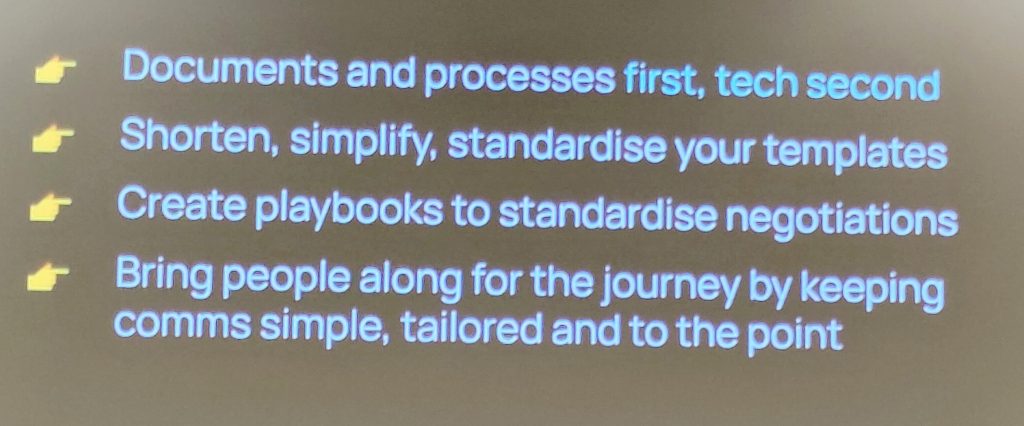
Naturally it is not sufficient having templates and playbooks, this also must be clearly communicated throughout the organization. The legal department must be clear about their message around this and consider who the users are and explain this in a plain language. That is described with the abbreviation KISS, which means Keep It Simple Stupid…
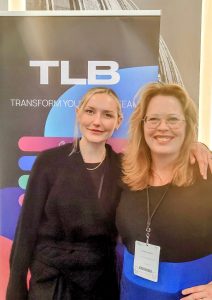 It should be noted that Roisin is not just an inspirational speaker on the subject. She has great practical experience of this since she is one of the co-founders of the standards initiative OneNDA, which is a crowd-sourced, open-source Non Disclosure Agreement available for free. She is also a co-founder of Claustack, a community for lawyers to collaborate on standardizing legal document. We at VQ are strong believers in standardization and will come back to this subject later.
It should be noted that Roisin is not just an inspirational speaker on the subject. She has great practical experience of this since she is one of the co-founders of the standards initiative OneNDA, which is a crowd-sourced, open-source Non Disclosure Agreement available for free. She is also a co-founder of Claustack, a community for lawyers to collaborate on standardizing legal document. We at VQ are strong believers in standardization and will come back to this subject later.
During this day, there were several panel discussions with different views on the management of contracts and how to further develop in-house work with titles such as “Who Owns Contracts?”, “The ALSP Revolution”, “Picking the Right Tool in the Sea of Solutions”, “The Evolution of Legal Ops” and “Measuring value”.
In the panel regarding CLM, i.e. Contract Lifecycle Management, it was stressed that CLM is not about tech. It is about the process regarding the management of contracts. If you have a messy situation with lots of unorganized contracts, the solution is not to buy a tech tool. But once you have organized the management of your contracts; it could be both the production of contracts and the management of signed contracts, this should be supported by a tech tool. Tech doesn’t replace your management but will enhance it.
Surprisingly it doesn’t seem to be any good contract management software’s out there. Almost no one seems satisfied with the available on-shelf systems. This was also the conclusion in a recent article in law.com, 5 Areas Where Tech is Falling Short, where after the initial buzz around CLM consultants and buyers have started to notice that not all tools necessarily work the way they should.
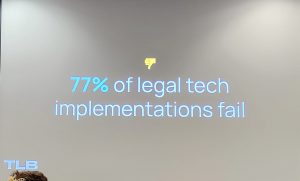 Roisin made a point of this in her presentation when she stated that “77% of legal tech implementations fail.”. She explained several reasons for these failures such as; the solutions are not plug and play, there is no stakeholder buy-in, the tool is not fit for purpose and too many requirements.
Roisin made a point of this in her presentation when she stated that “77% of legal tech implementations fail.”. She explained several reasons for these failures such as; the solutions are not plug and play, there is no stakeholder buy-in, the tool is not fit for purpose and too many requirements.
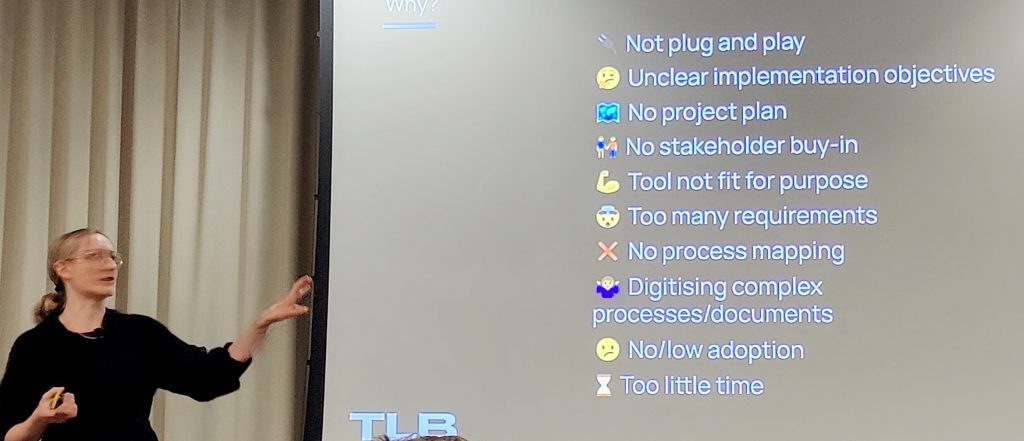 Panelists confirmed this by describing several failed projects where the reality clashed once they had proceeded with the project. In one example where they had been working really hard with the project for several weeks, based on a lengthy requirements specification, they finally realized that one basic criteria for the system was not in place. It couldn’t handle the format they were working in daily, i.e., word documents, only pdfs….
Panelists confirmed this by describing several failed projects where the reality clashed once they had proceeded with the project. In one example where they had been working really hard with the project for several weeks, based on a lengthy requirements specification, they finally realized that one basic criteria for the system was not in place. It couldn’t handle the format they were working in daily, i.e., word documents, only pdfs….
Therefore, more plug and play solutions ought to be the way forward for this target group. At the conference there was for example a demo from Ernst & Young regarding their solution EY Data Permissions Navigator (EY DPN) that has embedded legal content and a quite easy interface with interactive reporting dashboards.
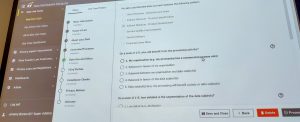
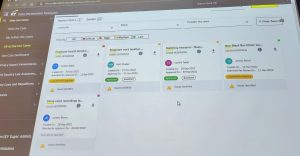
There is really an opportunity out there to support in-house lawyers and release them from their high-volume work.

